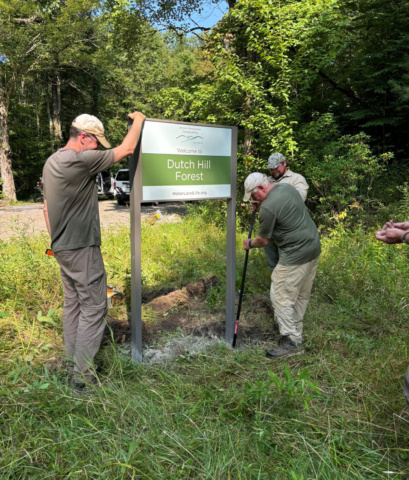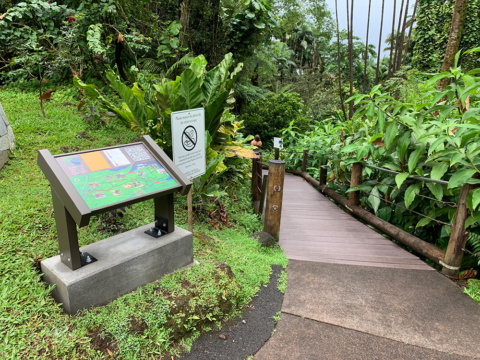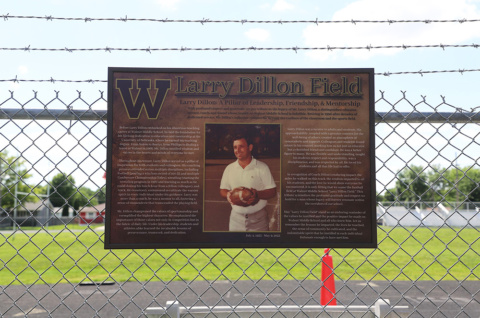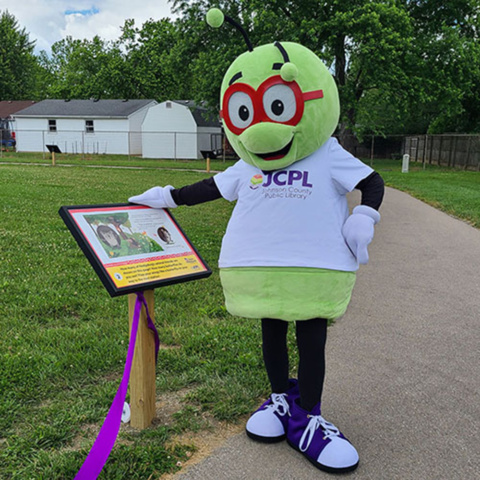Communities around the world are experiencing the delightful and fun effects of StoryWalk® installations. The idea started trending in 2007, when it was created by Anne Ferguson of Montpelier, Vermont. Over the past year, the viral concept inspired a surge of installations as people searched for safe ways to incorporate learning in non-traditional environments. StoryWalk® is an innovative and interactive way for readers of all ages to enjoy a story, exercise, and the outdoors all at the same time.
“Reading is to the mind, what exercise is to the body.” —Joseph Addison
What Is StoryWalk®?
A StoryWalk® is a deconstructed children’s book, assembled page by page onto exhibit bases along a walking path. As one strolls down the trail, pathway, or greenspace, pages are discovered and the story unfolds. Activity prompts are often incorporated onto the pages to encourage movement and discovery. Boston Children’s Museum creatively describes StoryWalk as, “One of those unexpected, delightful ideas that combine three critical elements for overall family health: early literacy learning, family engagement outdoors, and physical activity.”
StoryWalk® is a registered service mark owned by Anne Ferguson and developed in collaboration with the Kellogg-Hubbard Library. Ms. Ferguson speaks on the brilliant concept’s inception:
“When I created the StoryWalk® Project in 2007, I knew I had a great idea; I just didn’t anticipate how well it would be received across the country and beyond. The idea was quite simple actually. Take the pages from a children’s picture book, attach each one to a stake and line them up along a path for folks to read and enjoy.”
Ms. Ferguson was working as a chronic disease prevention specialist when she came up with the idea and immediately knew she wanted to create something different, fun, and interesting. She states, “I had tried some different approaches involving children, but found that the parents stood around chatting while the children were physically active. I knew I wanted to create something where the parents had to be as active as the children.”
StoryWalk® was created as a way to inspire parents, teachers, and other adults to take young children outdoors to enjoy reading stories together. It helps build children’s interest in reading while encouraging healthy outdoor activity for both children and their caregivers. Lynn Capps, Assistant Director of Clay County Public Library System, sees StoryWalk® as an opportunity to empower caregivers to be their child’s first teacher.
Today, local community members in Vermont can borrow forty StoryWalk® books through the Kellogg-Hubbard Library to display and many other libraries across the world are catching onto the trend as well. StoryWalk® projects have spread to all 50 states, 13 countries and many more are actively being developed and installed!
Best Practices to Get Started
Choose a location in an easily accessible public space. Consider the technical process of installing the StoryWalk® exhibits around existing structures and pedestrian pathways. Libraries, community trails, parks, and other recreational areas are creative locations for families to walk and read together. These are places where children already make discoveries that deepen their curiosity of the world and surrounding environment. The types of learning that take place in these environments promote the development of skills that shape a child’s success in school and life.
Funding will greatly depend on the desired materials used in the project. Each StoryWalk® project is unique and cost varies based on location and the diverse forms of exhibits used. They can be temporary or permanent structures. Investing in durable, aluminum exhibit bases reassures the community that this activity is here to stay. Reach out to community sectors—schools, libraries, museums, early childhood organizations—for opportunities to partner in the creation of a StoryWalk®.
Find a book with appropriate material for an audience of all ages. Colorful pictures and interactive activities are perfect for the little ones! Keep in mind that the number of pages needs to correlate with the number of exhibits installed along the StoryWalk®. Support local talent and reach out to nearby authors who might be interested in donating their children’s book or libraries with a StoryWalk® program.
Spread the word! Plan an event around the opening of the StoryWalk®. Post flyers and create announcements or partner in conjunction with a preexisting community event to generate excitement. Emphasize the many benefits, such as the importance of early literacy and fostering connections to nature. Remember, even if the exhibit base is a permanent structure, that doesn’t mean the story needs to be! Publicize every time the story is updated. Frequently switching out the story will keep the pages looking fresh and visitors coming back for more.
People from all over the world are using StoryWalk® to positively reflect the community, promote the physical well-being of families, contribute to school readiness, and get outdoors. Feeling motivated? Parks and recreation professionals are equipped with many of the tools and resources to make this project a reality. All it takes is one person to start a movement, and this is one that will benefit the community for years to come.
Fill out Pannier’s StoryWalk® Information Request form to get started on your project!
Sources
Take a Hike! Building Literacy Skills Through StoryWalk®, by Boston Children’s Museum
The StoryWalk® Project, 2017, by Anne Ferguson
StoryWalk®, Kellogg-Hubbard Library, www.kellogghubbard.org/storywalk
StoryWalk®, Let’s Move in Libraries, www.letsmovelibraries.org/storywalk









